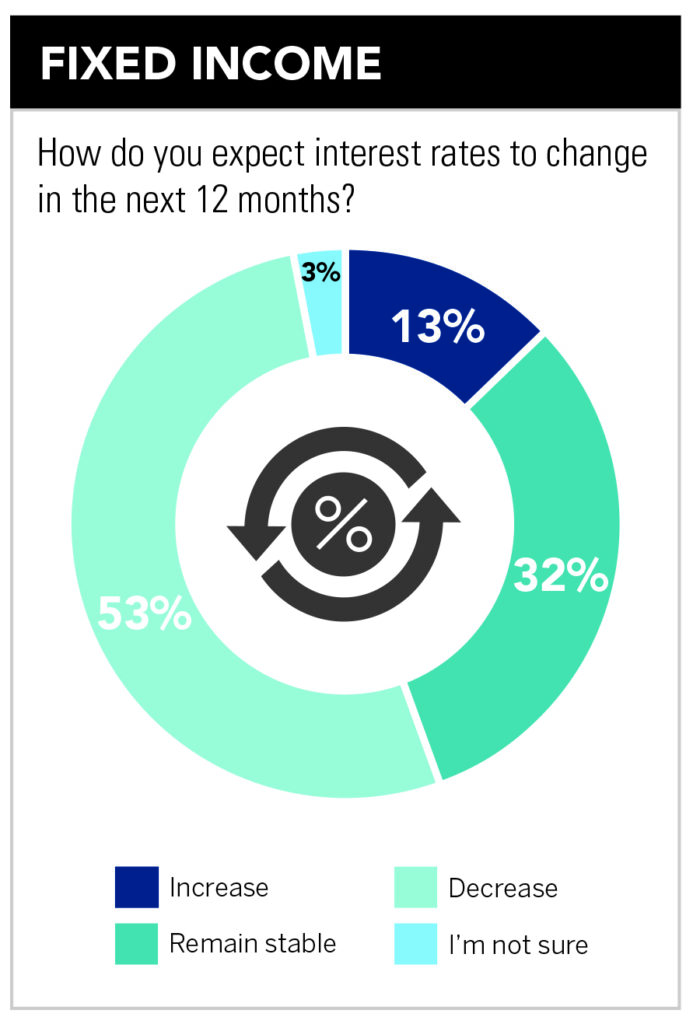

Economists, according to the well-worn joke, have predicted nine of the last five recessions. That track record did not improve in 2023.
Despite dire predictions at the year’s outset that rate hikes and a concurrent tech sector slowdown would bring down the economy in 2023, no recession came to pass and the S&P managed a 24 percent rally over the year, albeit from a low point.
Advisors, for their part, are split on whether the economy will ultimately slow down this year, according to data from a recent InvestmentNews survey. But they are much more confident in the markets than they were a year ago.
Of the US-based financial advisors surveyed during the fourth quarter, only 45 percent expected the economy to improve over the next year, while 42 percent expected it to worsen. That compared with 55 percent and 23 percent, respectively, over the prior quarter but represented a modest improvement from a year ago.
The market outlook was comparatively rosy. Two-thirds (67 percent) of advisors expect the S&P to grow over the next year, while only 19 percent expect it to decline. That compares with 55 percent and 29 percent, respectively, going into 2023.
That jibes with the general consensus among economists. Though nobody is forecasting the best of times, few are calling for an all-out downturn.
Goldman Sachs pegs the odds of a recession over the next 12 months at 15 percent, down from 65 percent a year ago. Bank of America’s economists, meanwhile, raised the possibility of market records in predicting a so-called soft landing, the scenario in which the Fed reins in high recent inflation without derailing economic growth entirely.
Of course, the caution that permeates economists’ forecasts – and the split among advisors on the economic outlook – reflects the rarity of the soft-landing scenario, as well as the uncertainty presented by two global conflicts and major elections scheduled at home and abroad over the next year.
The market optimism is easier to explain. After inflation and interest rate hikes over the past two years that hadn’t been seen in a generation, lower interest rates anticipated by the Fed – as well as by a majority (53 percent) of advisors surveyed – should juice stock markets.

The areas set for the most increased investment on net were actively managed ETFs, with 40 percent of advisors anticipating more exposure and only 4 percent expecting less; US fixed income, with 44 percent of advisors anticipating more exposure and 8 percent expecting less; individual stocks, which 28 percent of advisors expect to use more and 7 percent expect to use less; and liquid alternatives, which 22 percent of advisors expect to use more and only 3 percent expect to use less.
The least in-demand areas of investment over the next year, according to the survey, were European equities, where 24 percent of advisors will reduce their exposure and only 13 percent will increase it; Asian equities, where 21 percent of advisors plan to reduce investment and only 10 percent expect to increase it; Japanese equities, where 19 percent of advisors will reduce exposure and 10 percent will increase it; and ESG funds, which 15 percent of advisors will use less of, only 6 percent will use more of, and a majority (52 percent) will eschew altogether.

Relationships are key to our business but advisors are often slow to engage in specific activities designed to foster them.

Whichever path you go down, act now while you're still in control.

Pro-bitcoin professionals, however, say the cryptocurrency has ushered in change.

“LPL has evolved significantly over the last decade and still wants to scale up,” says one industry executive.

Survey findings from the Nationwide Retirement Institute offers pearls of planning wisdom from 60- to 65-year-olds, as well as insights into concerns.
Streamline your outreach with Aidentified's AI-driven solutions
This season’s market volatility: Positioning for rate relief, income growth and the AI rebound
